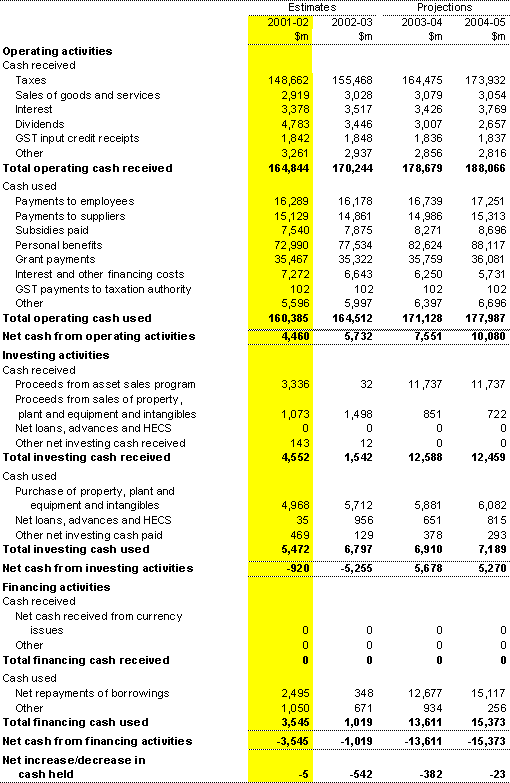This appendix describes the external reporting standards upon which this report is based, and financial statements for the Commonwealth General Government Sector, presented in accordance with those standards. The standards are consistent with those used in 2001-02 Budget and the 2001-02 MYEFO.
External reporting standards
The major external standards used in this report are the Australian Bureau of Statistics (ABS) accrual Government Finance Statistics (GFS) framework and Australian Accounting Standards, including Australian Accounting Standard No. 31 Financial Reporting by Governments (AAS31). The estimates provided in this report are generally consistent with these standards, with the following exceptions.
The draft ABS GFS publication Australian System of Government Finance Statistics: Concepts, Sources and Methods (Cat. No. 5514.0) requires that provisions for bad and doubtful debts be excluded from the balance sheet. This treatment has not been adopted in this report because excluding such provisions would overstate the value of Commonwealth assets in the balance sheet (and would therefore be inconsistent with the market valuation principle).
The GFS framework also requires that flows and stocks are valued at current market prices (or where these are not observable, a suitable proxy indicator). However, as outlined in the budget papers, not all assets and liabilities in the Commonwealth's GFS balance sheet are currently valued at current market prices. This is principally because Australian Accounting Standards allow reporting entities to elect to value their assets at either cost or fair value (current market value).
In relation to taxation revenue, the relevant external reporting standards suggest that accrual revenue be recognised at the time the income (or economic activity) giving rise to a tax liability occurs, where this can be measured reliably. The budget papers note that at this stage it is not considered that taxation revenues can be reliably measured on this basis for budget reporting purposes. Accrual taxation revenue in this report is therefore recognised at the time a taxpayer makes a self-assessment or when the Australian Taxation Office or the Australian Customs Service raises a tax assessment.
Finally, consistent with the presentation adopted by the Government in the Budget, Commonwealth revenue and expenses estimates in the main body of this report (and in the AAS31 financial statements below) do not include goods and services tax (GST) collections and equivalent payments to the States. However, in line with the Budget presentation, the GST is recorded as a Commonwealth revenue and the equivalent payments to the States as Commonwealth expenses in the GFS financial statements presented in this appendix.
Additional information on external reporting standards and budget concepts applied in this report is provided in Appendix D of the 2001-02 MYEFO.
Government Finance Statistics statements
Table A1: Commonwealth general government operating statement - GFS
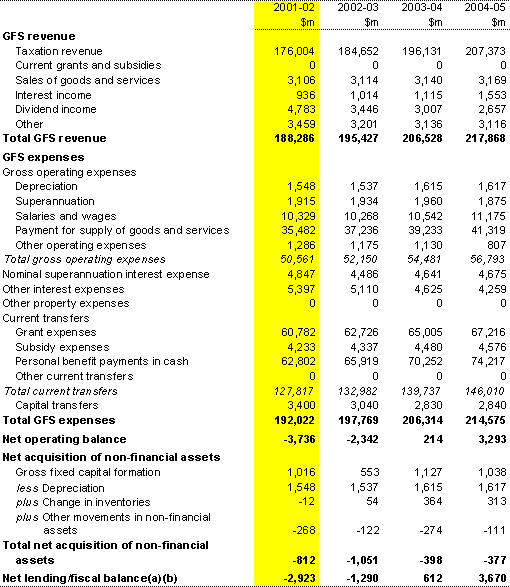
(a) GFS net lending also equals net transactions in financial assets less net transactions in liabilities. The term `fiscal balance' is not used by the ABS.
(b) The fiscal balance and net operating balance estimates for 2001-02 in this table are $150 million greater than the 2001-02 fiscal balance and net operating balance estimates in the fiscal outlook section of the PEFO. This represents GST revenue accrued in 2001-02 but not yet paid to the States (as GST is paid to the States on a cash basis). Under the State tax treatment applied elsewhere in this document, GST revenue accrued is offset by an equivalent amount payable to the States. Further information is provided in Attachment A to Part I of the Final Budget Outcome 2000-01.
Table A2: Commonwealth general government balance sheet - GFS
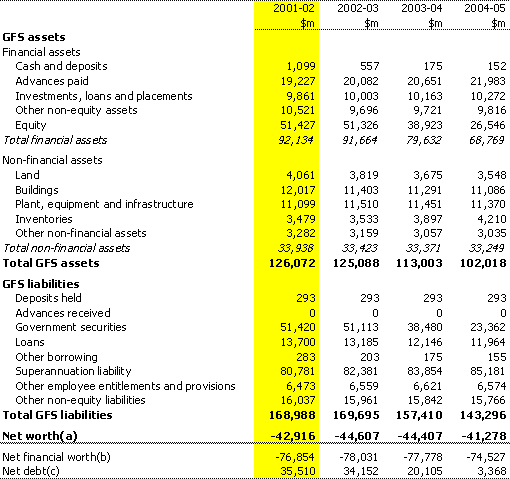
(a) Net worth is calculated as assets minus liabilities.
(b) Net financial worth equals total financial assets minus total liabilities.
(c) Net debt equals the sum of deposits held, advances received, government securities, loans and other borrowing, minus the sum of cash and deposits, advances paid, and investments, loans and placements.
Table A3: Commonwealth general government cash flow
statement - GFS(a)
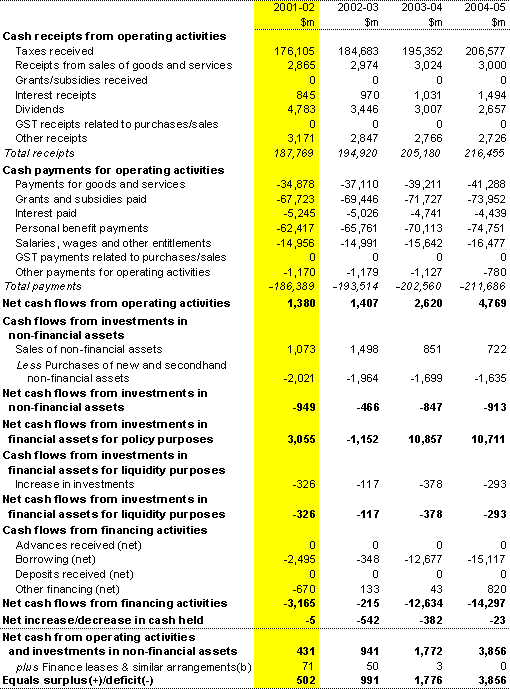
(a) A positive number denotes a cash inflow, and negative number denotes a cash outflow.
(b) The acquisition of assets under finance leases reduces the surplus/deficit.
AAS31 Financial Reporting by Governments statements
Table A4: Statement of revenue and expenses for the Commonwealth general government sector - AAS31
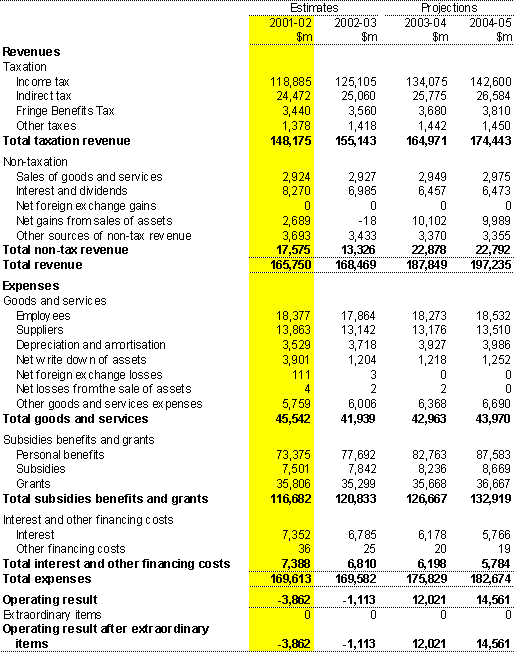
Table A5: Balance sheet for the Commonwealth general government sector - AAS31
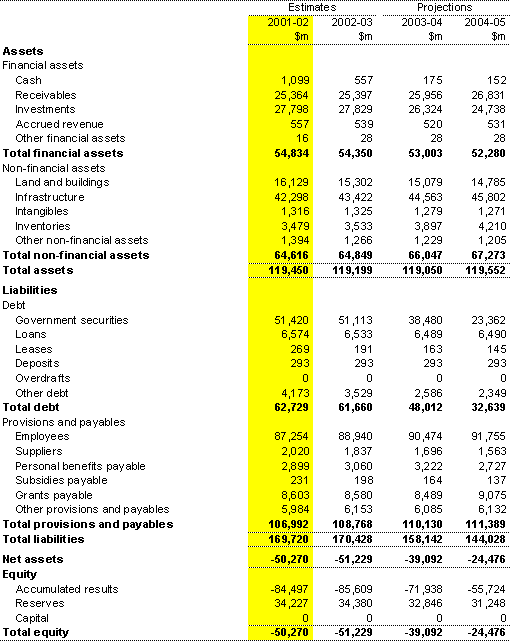
Table A6: Statement of cash flows for the Commonwealth general government sector - AAS31
